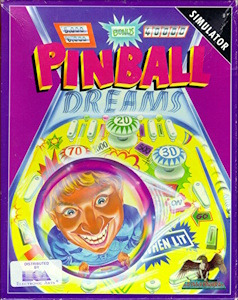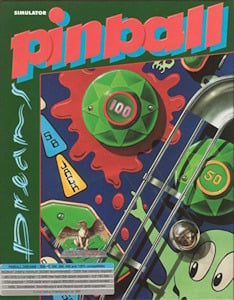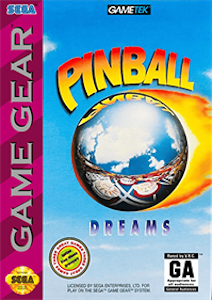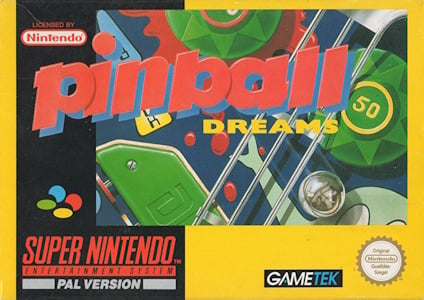Pinball Dreams (1992-)
Pinball Dreams was developed by Digital Illusions CE (DICE) and released in 1992, published by 21st Century Entertainment. It marked one of the earliest and most influential digital pinball games, celebrated for its realistic physics and innovative table designs. Drawing inspiration from classic physical pinball machines, Pinball Dreams aimed to recreate the excitement and complexity of pinball gameplay within a digital format. The game featured a collection of four distinct tables, each with unique themes and challenges that showcased the capabilities of home computers at the time.
Initially launched on the Amiga, Pinball Dreams was later ported to numerous platforms including MS-DOS, Atari Jaguar, Super Nintendo Entertainment System, and various handheld systems. Each port sought to maintain the fluid ball movement and vibrant visuals that made the original a standout title. Gameplay emphasized precise control of flippers, strategic use of bumpers, ramps, and multiball modes, offering a depth of play that appealed to both casual players and pinball enthusiasts. The soundtrack, composed by Olof Gustafsson, became highly regarded for its catchy and atmospheric tunes, which contributed significantly to the game’s immersive experience.
Pinball Dreams did not have a prequel but was followed by several successful sequels, most notably Pinball Fantasies, which built upon the original’s foundation with enhanced graphics and more intricate tables. These titles helped establish Digital Illusions as a major player in the digital pinball genre and influenced many subsequent pinball games. The game was promoted primarily through gaming magazines, demo disks, and word of mouth, with an emphasis on its realistic gameplay, visual appeal, and the addictive nature of its table designs.
Upon release, Pinball Dreams received widespread critical acclaim, praised for its technical achievements, smooth gameplay, and memorable soundtrack. Reviewers noted the game’s ability to capture the essence of physical pinball while introducing new digital elements that kept players engaged. It quickly became a favorite among Amiga users and was considered a benchmark for digital pinball simulations. The game’s success ensured it would remain a beloved classic and a foundation for future titles in the series.
Images from MobyGames
Buy Pinball Dreams
Click one of the Ebay or Amazon buttons below to check the latest prices and purchase Pinball Dreams for that particular platform.





Related Searches
Pinball Dreams is available to purchase and download from a range of vendors. Always shop....
Pinball Dreams may be available to download as abandonware from one of the many sites that offer this...
There are various sites out there that can offer cheat codes for games. Search now to find all available...
There are many sites out there that have collated and documented historic reviews of this game. Search now...
We don't host or link to rom sites for this game. However, there are many sites out there that may be...
The initial release date for Pinball Dreams is stated as some time during 1992. Other ports of the game may....
Pinball Dreams is available to purchase and download from the link(s) shown further up this....
There are multiple sites around the internet that offer visual guides to this game. Search now to find the....








